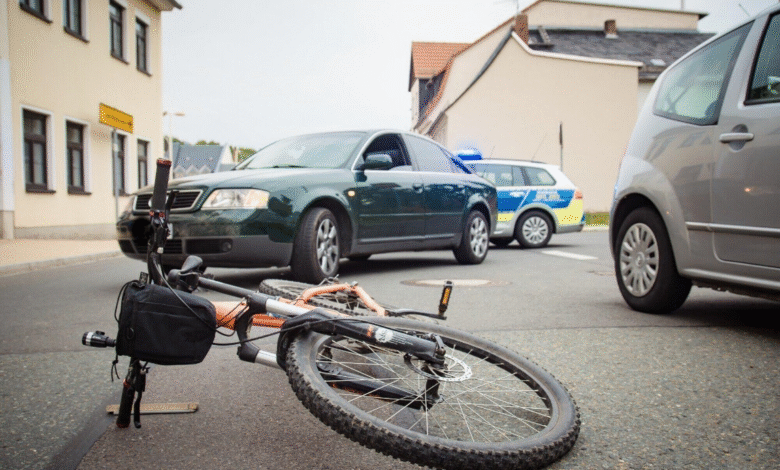Unseen Hazards: Common Reasons Bicycle Accidents Occur on Roads

Cycling is one of the best ways to stay fit, save money, and enjoy the outdoors. But sharing the road with cars, trucks, and buses isn’t always smooth sailing. Even the most careful riders face hidden dangers that can lead to accidents. Many of these hazards aren’t always obvious until it’s too late.
This article explores the most common reasons bicycle accidents happen on the road-and how to stay safe while pedaling your way through traffic. Let’s dive in!
Distracted Drivers
One of the biggest threats to cyclists today is distracted driving. Whether a driver is texting, adjusting the GPS, or grabbing a coffee, even a second of inattention can lead to a collision.
Cyclists are especially at risk because they’re harder to see and offer no protection in a crash. To reduce your risk:
- Wear bright, visible gear
- Make eye contact first
- Avoid driver blind spots
Unfortunately, even when cyclists do everything right, a distracted driver can still cause serious harm.
Poor Road Conditions
Cracks, potholes, loose gravel, and uneven pavement might seem like minor issues to drivers, but they’re major hazards for cyclists. A small bump can throw a rider off balance, especially at higher speeds. Wet or oily roads add even more risk by reducing traction.
When riding, scan the road ahead and slow down in areas with visible damage or debris. If possible, plan routes on streets with bike lanes or smoother pavement. Municipalities should also be held accountable for maintaining safe cycling infrastructure.
Dooring Incidents
“Dooring” happens when someone in a parked car opens their door into the path of a cyclist. It’s one of the most common urban bike accidents-and it can happen in an instant.
Many cyclists have little time to react, leading to serious injuries. To stay safer:
- Keep a safe distance parked
- Watch for brake lights
- Check mirrors for safety
Drivers can help by using the “Dutch Reach” method-opening the car door with their far hand, which forces them to turn and check for oncoming bikes.
Unsafe Passing and Right Hooks
Another frequent danger comes from vehicles passing too closely or turning across a cyclist’s path. The “right hook” accident happens when a driver overtakes a cyclist, then immediately turns right, cutting the rider off. To prevent these situations:
- Take the lane for visibility
- Signal clearly, stay predictable
- Approach intersections cautiously
Drivers should always give cyclists at least three feet of space when passing. Unfortunately, not everyone follows that rule.
Weather Conditions
Rain, fog, or even bright sun can all increase the risk of an accident. Rain makes roads slick and reduces visibility, while fog can make it hard for drivers to see cyclists at all.
Even sunlight can be dangerous when it blinds someone coming around a corner. Cyclists can minimize these risks by:
- Wear reflective clothing always
- Use front, rear lights
- Slow down, allow distance
Checking the forecast before heading out can help you plan your route and gear accordingly.
Inexperienced or Reckless Cyclists
While drivers cause many crashes, cyclists themselves can also make mistakes that increase danger. Inexperienced riders sometimes weave between lanes, ignore traffic signals, or ride against the flow of traffic-all of which create confusion and raise the risk of a crash.
If you’re new to cycling, learn the local road rules, use hand signals, and always stay alert. A confident, predictable riding style helps drivers anticipate your movements.
The Rise of Ebikes and Mixed-Speed Traffic
The growing popularity of electric bikes has changed the cycling landscape. An ebike can travel much faster than a traditional bicycle, but not every rider or driver adjusts for that difference. This mix of speeds often causes misunderstandings at intersections or during lane changes.
Ebike riders should be especially cautious when merging with cars or passing slower cyclists. Always use turn signals and be mindful of speed when approaching pedestrians or crosswalks.
Lack of Dedicated Bike Lanes
In many cities, the lack of safe, designated cycling infrastructure is a huge problem. Without bike lanes, cyclists are forced to share narrow roads with vehicles that may not leave enough space. Even when lanes exist, they can sometimes end abruptly or be blocked by parked cars.
Advocating for better infrastructure-protected lanes, clear signage, and safer intersections can make a long-term difference. In the meantime, riders should plan routes using bike-friendly maps or cycling apps that highlight safer streets.
Mechanical Failures
Sometimes, accidents aren’t caused by other people or the environment at all. Loose brakes, flat tires, or chain malfunctions can turn an ordinary ride into a dangerous one. Regular maintenance is crucial to keeping your bike safe.
Before every ride, check tire pressure, brake response, and gear shifting. Carry a small toolkit or patch kit for emergencies. It’s a simple habit that can prevent major accidents.
Low Visibility at Night
Many serious bike crashes happen after dark. Without proper lighting, cyclists become nearly invisible to drivers. Reflective gear, blinking rear lights, and a bright headlamp are essential for any night ride.
Try to ride in well-lit areas and stay alert for vehicles that may not see you until the last second. Visibility isn’t just a safety tip-it’s a lifesaver.
Staying Safe and Aware
Cycling should be fun, healthy, and empowering-not stressful or dangerous. Understanding these unseen hazards helps you prepare for them before they happen. Whether you ride to work, for fitness, or just for fun, a little awareness can go a long way toward preventing accidents.
If you’re ever involved in a serious collision, don’t handle it alone. Knowing your rights and seeking professional help can make a major difference in recovery and compensation.
Pedal Smart, Stay Safe
The road can be unpredictable, but that doesn’t mean you have to hang up your helmet. By recognizing the most common causes of bicycle accidents-distracted drivers, unsafe road conditions, and limited visibility can take smarter steps to protect yourself.
Riding responsibly, staying visible, and maintaining your bike are all part of staying safe. Every time you get on two wheels, you’re not just cycling-you’re sharing the road with everyone else. Awareness is your best defense, and with it, you can keep every ride a little safer.
Is this article helpful? Keep reading our blog for more. NewsDipper.co.uk


